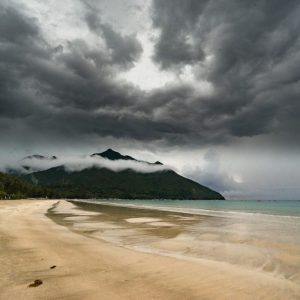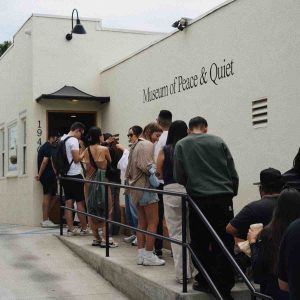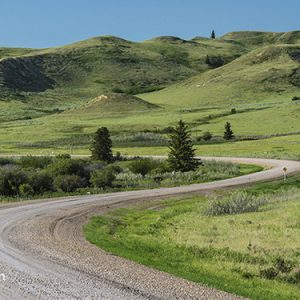
Backroad Blooms: A Photographer’s Guide to Southern Wildflowers
The South. A tapestry woven with Spanish moss, humid air thick with the scent of honeysuckle, and a vibrant explosion of wildflowers that paint the backroads in hues unseen elsewhere. This isn’t just a region; it’s a living, breathing artwork, begging to be captured through the lens. Backroad Blooms: A Photographer’s Guide to Southern Wildflowers isn’t just another guide; it’s an invitation to explore this ephemeral beauty, to understand its nuances, and to master the art of capturing its fleeting magic.
Beyond the Tourist Trail: Discovering Hidden Gems
Forget the manicured gardens. The true heart of Southern wildflowers lies beyond the paved roads, tucked away in sun-drenched meadows, along winding creek beds, and nestled in the shadows of ancient forests. This guide isn’t about easily accessible blooms; it’s about uncovering the secret pockets of nature where the rarest and most breathtaking specimens thrive. We’ll navigate the backroads, exploring the hidden gems that await those willing to venture off the beaten path.
Understanding the Southern Wildflower Calendar: Timing is Everything
The Southern wildflower season is a dynamic dance between sun, rain, and soil. Mastering its rhythm is crucial to capturing the perfect shot. Each bloom has its own fleeting window of perfection, a brief moment where its vibrant colors and delicate structure are at their peak. This guide provides a month-by-month calendar, highlighting the key blooms to look for and their optimal photographic window.
| Month | Featured Blooms | Photography Tips |
|---|---|---|
| March | Bloodroot, Spring Beauties | Focus on delicate details, shallow depth of field |
| April | Dogwoods, Bluebonnets (Texas) | Capture the contrast of white against green |
| May | Lupines, Indian Paintbrush | Utilize leading lines, experiment with angles |
| June | Milkweed, Bee Balm | Capture pollinators in action |
| July | Black-eyed Susans, Butterfly Weed | Utilize backlighting for a dreamy effect |
| August | Goldenrod, Asters | Focus on texture and intricate details |
| September | Gentians, Ironweed | Capture the late summer hues and subtle light |
Mastering the Art of Wildflower Photography: Technique & Composition
This isn’t just about pointing and shooting; it’s about understanding light, composition, and the unique challenges of capturing delicate blooms in their natural environment. We’ll explore techniques such as:
- Light & Shadow: Harnessing the golden hour, understanding backlighting, and using diffused light to illuminate the delicate petals.
- Composition & Framing: Utilizing leading lines, the rule of thirds, and negative space to create visually stunning images.
- Depth of Field: Mastering shallow depth of field to isolate the subject and create a dreamy effect.
- Macro Photography: Delving into the intricate details of each bloom using macro lenses.
- Post-Processing: Gentle editing techniques to enhance colors and sharpness without compromising the natural beauty of the flowers.
Respecting Nature’s Canvas: Ethical Considerations
Our pursuit of beauty shouldn’t come at the cost of nature’s integrity. This guide emphasizes ethical photography practices, promoting responsible interaction with the environment and ensuring the preservation of these fragile ecosystems for future generations. We’ll cover topics such as:
- Leave No Trace: Minimizing our impact on the environment.
- Respecting Wildlife: Maintaining a safe distance from animals and avoiding disturbing their habitats.
- Sustainable Practices: Avoiding picking wildflowers and encouraging responsible tourism.
Beyond the Lens: Connecting with the Landscape
Backroad Blooms is more than just a photography guide; it’s a journey of discovery. It’s about immersing yourself in the beauty of the Southern landscape, understanding the ecosystems that support these vibrant blooms, and fostering a deeper appreciation for the natural world. Embrace the adventure, and let the beauty of the backroads inspire you. Let the Southern wildflowers become your muse.

Additional Information
Beyond the Bloom: A Deeper Dive into “Backroad Blooms: A Photographer’s Guide to Southern Wildflowers”
While “Backroad Blooms” likely provides a visually stunning introduction to Southern wildflowers and their photographic capture, a deeper analytical approach reveals several key areas deserving further exploration. This analysis will focus on enhancing the book’s value by addressing its implicit and explicit assumptions, considering its limitations, and proposing avenues for future expansion.
1. Ecological Context and Conservation Concerns:
The book’s success hinges on the continued existence of the wildflowers documented. A critical analysis requires incorporating a robust ecological perspective. This could involve:
- Species-Specific Vulnerability: Identifying which species featured are threatened, endangered, or vulnerable due to habitat loss, invasive species, or climate change. Including IUCN Red List status or similar assessments alongside each species would add significant value. For example, mentioning the declining population of Silene regia (Royal Catchfly) and the threats to its prairie habitat would encourage responsible photographic practices.
- Impact of Photography: The guide should address the potential negative impact of photographers on delicate ecosystems. This includes trail erosion, trampling, and disturbing nesting sites. Best practices for minimal-impact photography, such as sticking to established trails, maintaining distance, and avoiding flash photography during sensitive periods, are crucial additions.
- Habitat Restoration and Conservation Efforts: Including information on local conservation organizations working to protect these habitats would empower readers to contribute beyond photography. This could involve listing relevant websites, contact information, and volunteer opportunities.
2. Technical Aspects and Photographic Best Practices:
While the book likely covers basic photographic techniques, a deeper dive is needed:
- Advanced Composition and Lighting: Beyond the basics, the guide should delve into advanced compositional techniques like the rule of thirds, leading lines, and negative space, specifically applied to wildflowers. Analysis of optimal lighting conditions (golden hour, blue hour) for various species, considering their petal structure and color, would enhance photographic quality.
- Post-Processing Techniques: Detailed instructions on post-processing workflow, including software choices (e.g., Lightroom, Photoshop), color correction, sharpening, and noise reduction tailored to macro and landscape photography of wildflowers, are essential. Example before-and-after images illustrating these techniques would greatly benefit the reader.
- Equipment Considerations: A comparative analysis of different macro lenses, tripods, and filters, explaining their advantages and disadvantages for capturing specific types of wildflowers, would increase the practical value of the book.
3. Socio-Cultural Significance and Storytelling:
Expanding beyond the purely botanical and photographic aspects, the book could explore:
- Cultural History and Folklore: Incorporating local legends, historical uses (medicinal, culinary, or symbolic), and cultural significance of specific wildflowers adds a fascinating layer to the guide. For example, the historical use of certain plants in Appalachian folk medicine could enrich the narrative.
- Economic Impact: Exploring the economic contributions of wildflower tourism, beekeeping dependent on wildflowers, and other related industries in the South provides a broader perspective on the importance of these plants.
- Photographer Case Studies: Featuring interviews or profiles of renowned photographers specializing in Southern wildflowers would inspire readers and provide insights into their approaches and creative processes. This could showcase diverse stylistic approaches and perspectives.
4. Addressing Limitations and Future Directions:
The book’s scope inevitably has limitations. Acknowledging these limitations and suggesting avenues for future research or expansion would increase its credibility. For example:
- Geographic Limitations: Specifying the precise geographic areas covered and acknowledging the variations in wildflower species across the South.
- Seasonal Variations: Highlighting the seasonal availability of specific species and providing monthly flowering guides for various regions.
- Interactive Component: Exploring the potential for a digital companion app with interactive maps, species identification tools, and a community forum for photographers to share their images and experiences.
By incorporating these analytical insights and value-added components, “Backroad Blooms” can evolve from a simple guide into a comprehensive and impactful resource that celebrates Southern wildflowers while advocating for their conservation and promoting responsible photographic practices. The added depth would transform it from a visually appealing book into a powerful tool for education, conservation, and artistic inspiration.






